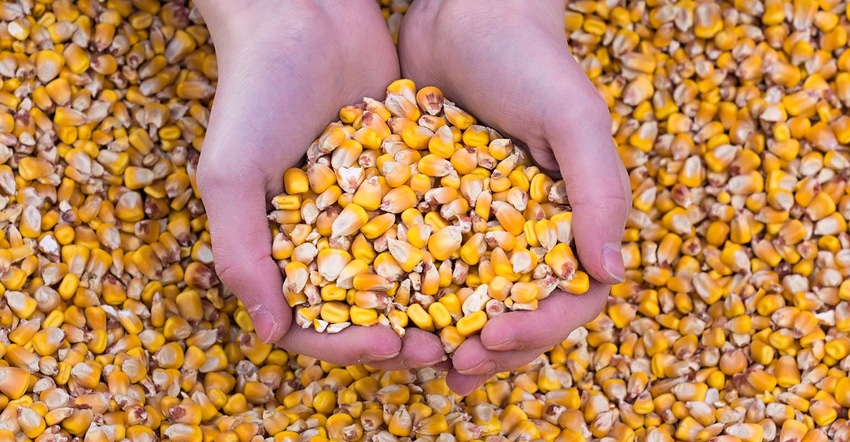
USDA’s September WASDE report will be released next Monday, Sept. 12. A great deal has changed since the August report was released. While various crop tours have estimated this 2022 crop mostly lower than the USDA, it remains to be seen how the agency sees the crop has come along in the last month.
It should be noted USDA doesn’t get in the field in August, so the September report is their first in-the-field assessment. We’ll review a couple of important items to consider as we head into what could be a volatile report.
First, consider why this report is so important. When the report was released Aug. 12, the open that day for Dec corn was at $6.27 ¾. For beans, the open was $14.48 ½. Given the report was a bit of a bearish surprise for beans but friendly corn, it’s easy to see why the market has moved in the manner it has. The ratio of bean/corn prices at these levels was 2.3/1, while the current ratio is 2.06/1. Bean prices have plummeted, with November currently trading in the $13.80 area while December corn has rallied -- currently around $6.67.
Let’s also consider what expectations are for this report. With the August national corn yield pegged at 175.4 bushels per acre, the average analyst guess for this report is 172.5 bpa as per Reuters survey of trader guesses. For beans, the August yield was 51.9 bpa, while the average trade guess is 51.5 bpa for this report. The guesses for new-crop carry are 1.217 billion bushels for corn and .247 bbu for beans.
Review your marketing plan
As a producer, given harvest is yet to begin for the bulk of the corn belt, the first thing we need to do is assess where we are in our market plan. For instance, how much corn have we sold when considering what our expected yields are. Given the tools available such as thermal imaging, a producer can better estimate yields than ever before.
For my farm in central Illinois, we look at the problem areas on our maps and the good areas as well when pulling yield checks. We then figure yield based on the percentages in the field that are problems (red areas) as well as the good (green areas). Doing this the last couple of years, we’ve come up with fairly-close estimates on yield.
New break-evens
Second, when we look at what percentage sold we are based on expected production, we must also consider what levels our sales-to-date were executed. For instance, a producer who calculated a break-even at $5 for the 2022 crop (fairly common) likely has most, if not all, of their sales in excess of break-even. An example of this is a grower with 2,000 acres of corn with a break-even of $5. IF that producer is 40% sold at an average of $6.25, their break even on the remaining 60% is now $4.17.
This is quite useful information if you feel you’re behind on your marketing plan and need to make sales before a report of this magnitude is released.
The fact of the matter is this corn crop is excellent in some areas and awful in others. While those with a sub-APH crop won’t be selling much if any corn, those with an APH+ crop need to realize how much money is currently on the table. The last numbers I’ll throw at you display just that. If a grower has 225-bushel corn this fall, at the cash price we currently see in our area, gross revenue would be in excess of $1,500 per acre.
While I know we all spent a fortune putting this crop out, we should all consider what havoc a volatile report could do when it comes to this sort of potential income.
I hope you have a safe harvest. Take a break here and there if at all possible.
Feel free to reach out to me or anyone on the AgMarket team. We’d love to hear from you.
Reach Matt Bennett at 815-665-0462 or [email protected].
The risk of loss in trading futures and/or options is substantial and each investor and/or trader must consider whether this is a suitable investment. AgMarket.Net is the Farm Division of John Stewart and Associates (JSA) based out of St Joe, MO and all futures and options trades are cleared through ADMIS in Chicago IL. This material has been prepared by an agent of JSA or a third party and is, or is in the nature of, a solicitation. By accepting this communication, you agree that you are an experienced user of the futures markets, capable of making independent trading decisions, and agree that you are not, and will not, rely solely on this communication in making trading decisions. Past performance, whether actual or indicated by simulated historical tests of strategies, is not indicative of future results. Trading information and advice is based on information taken from 3rd party sources that are believed to be reliable. We do not guarantee that such information is accurate or complete and it should not be relied upon as such. Trading advice reflects our good faith judgment at a specific time and is subject to change without notice. There is no guarantee that the advice we give will result in profitable trades. The services provided by JSA may not be available in all jurisdictions. It is possible that the country in which you are a resident prohibits us from opening and maintaining an account for you.
The opinions of the author are not necessarily those of Farm Futures or Farm Progress.
About the Author(s)
You May Also Like






